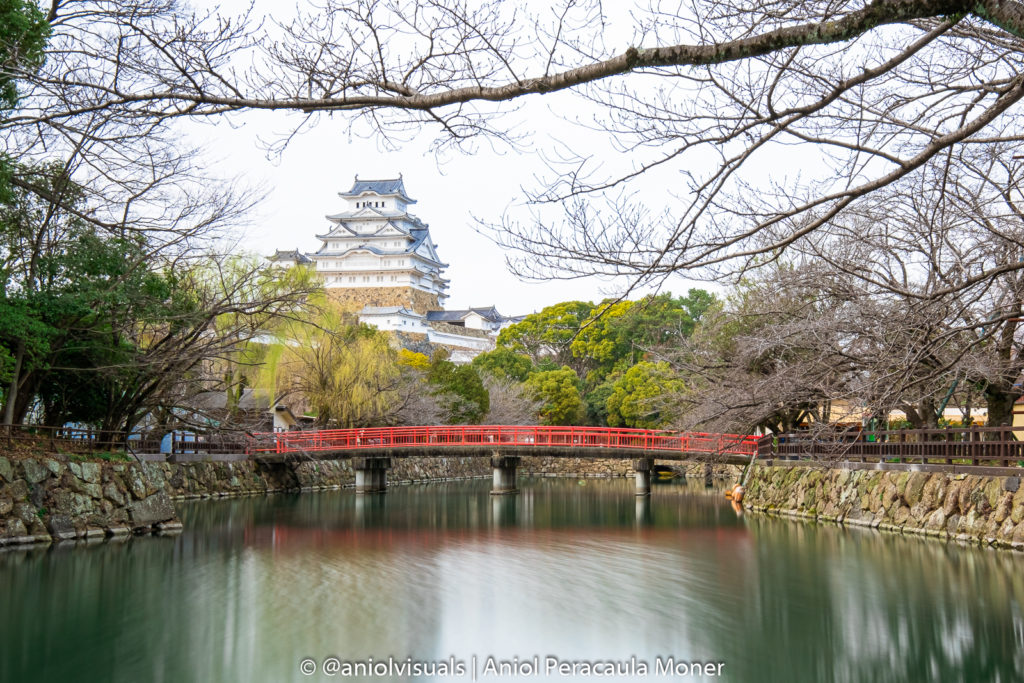Discover how to visit the tallest mountain in Japan. Explore the Five Lakes Area and Kawaguchi Lake with this in this Mount Fuji Guide!
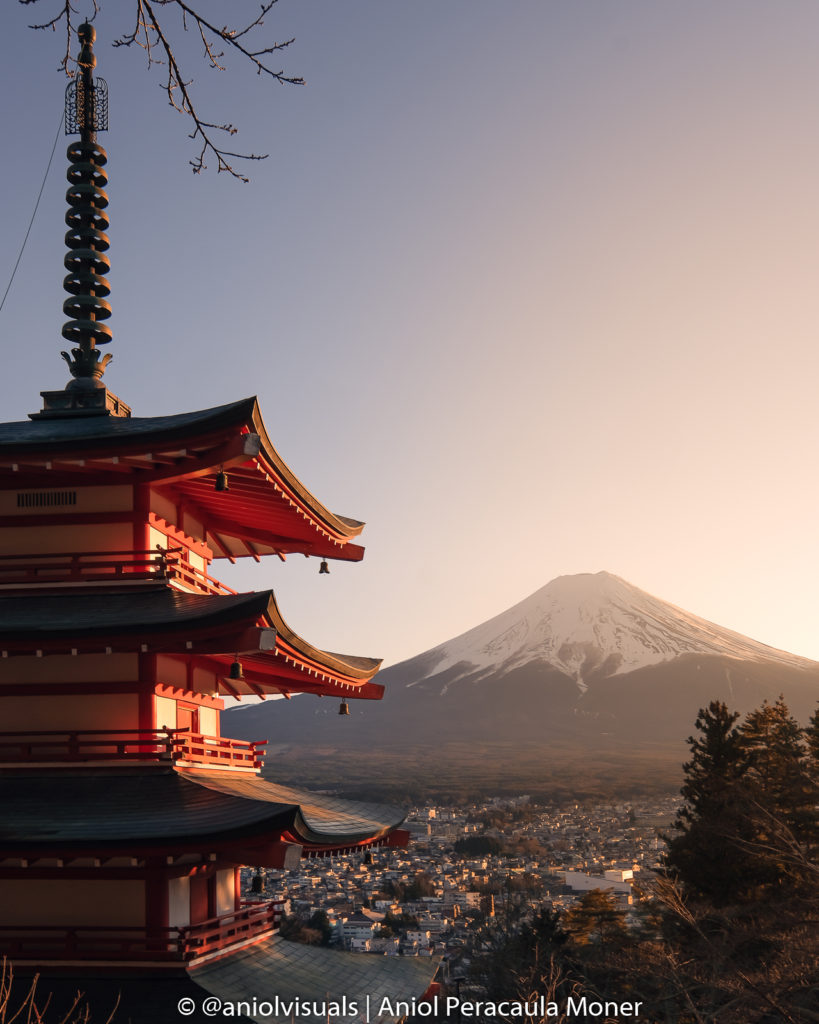
Planning a trip to Japan?
Discover all you need to know on my dedicated Japan travel page!
Mt. Fuji is one of the most iconic landmarks in Japan. It is not surprising that most trips to the land of the rising sun include a short visit to enjoy the views of the highest mountain in Japan. Without any doubt, the best place to admire Fujisan is the Five Lakes Area, easily accessible from Tokyo and with all the tourist facilities you will need.
The largest city in the area, Kawaguchiko, has all the facilities you need, besides some very interesting temples and attractions. In fact, it is in the Five Lakes area where there is one of the most iconic views in Japan: the red pagoda with Mount Fuji behind it. Keep reading the Mount Fuji five lakes are a guide to find out all you need to know to plan your visit there!
What is the Mt. Fuji Five Lakes area?
The Five Lakes Area, also known as Fuji-goko is a set of five lakes located north of Mt. Fuji, in the Yamanashi Prefecture. It is one of the best places to visit in Japan, and it has some of the most impressive views over Mt. Fuji. Moreover, it is also well-known for its outdoors activities.
The Five Lakes that can be found in this area are:
- Lake Kawaguchi: This is the most famous of the Five Lakes, and the access point to the Area. By its shore, there is the city of Kawaguchiko, with plenty of accommodation options and facilities.
- Lake Motosu: This is the lake depicted in the 1000 yen bill, and it is the ninth deepest lake in Japan.
- Lake Sai: This is, together with Lake Motosu and Lake Shoji, a lake created by lava flow.
- Lake Shoji: the smallest of the Five Lakes
- Lake Yamanaka: The largest lake but also the most distant one from Kawaguchi.
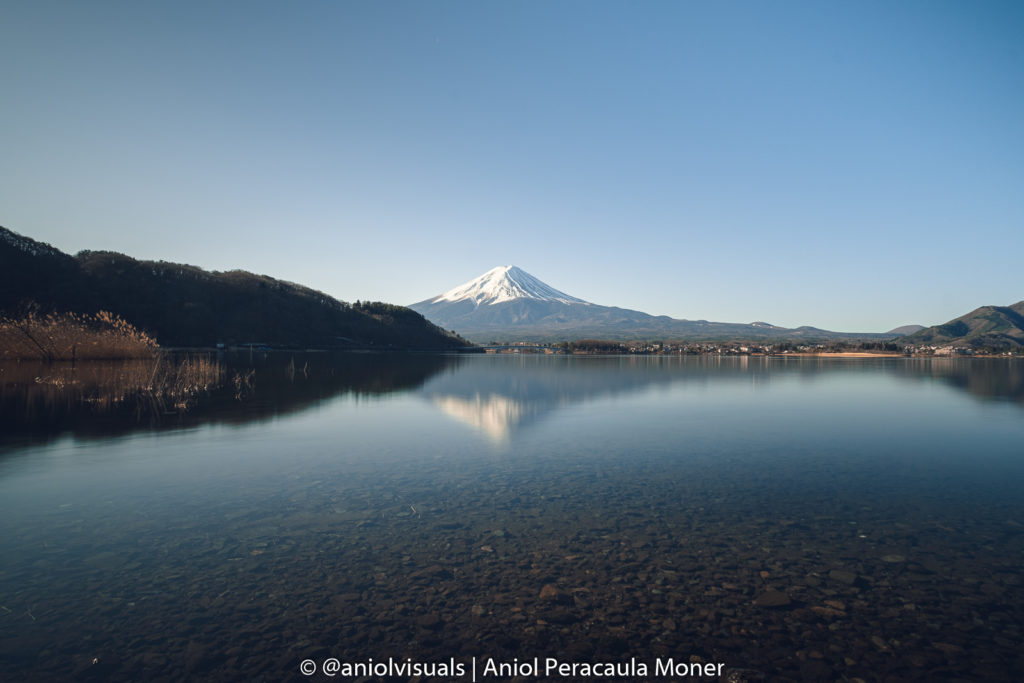
How to get to Fuji Five Lakes area?
I recommend making Lake Kawaguchi your first stop and base in the area. There is a reason why it is the most visited Lake, and its accessibility has a lot to do with it. By its shore, there is Kawaguchiko, the main city in the area, where most accommodations are located.
The best way to get to Lake Kawaguchiko is by train from Tokyo. Despite what some blogs online say, getting around in Japan is very easy, and if you have a good internet connection, there is nothing to worry about.
There are three main ways to reach Kawaguchiko Lake from Tokyo:
Direct train
This is the fastest and most comfortable option. If you are planning your trip to Kawaguchiko as a day trip, this is the best option. The Fuji Excursion train leaves from Shinjuku station and reaches Kawaguchiko in less than 2h. The Japan Rail Pass does not cover the whole trip (as of 2020), and you’ll have to pay a small fee of around 1000 yen. The only limitation of this train is that there are only a few services during the day. However, if you miss it, don’t worry, there is a local train!
Local Train
This is the most flexible way to get to Kawaguchiko. Take any of the JR trains from Shinjuku to Otsuki station, and from there, take the private train (extra fee) to go to Kawaguchiko. It is impossible to get lost. Once at Otsuki, without leaving the station, follow the mount Fuji signs or ask any of the personnel there. Once on the second train, sit on a left-side seat and enjoy the first views of Mt. Fuji.
Bonus tip! The noodles at the Otsuki train station restaurant are super cheap and tasty, use your time between trains wisely!
Bus
Not included in the JR Pass, there are regular buses for around 2000yen going from Tokyo Station to Kawaguchiko lake. For those not using the JR Pass, this could be an interesting option.
Planning your trip to the Mount Fuji Area
An important thing to consider when going to the Fuji Five Lakes area is how long you will be there. I strongly recommend staying at least one night at the Fuji Five Lakes area, in Kawagauchiko, by Lake Kawaguchi.
If you want to discover a bit more about the area, two o three nights would be ideal. Visiting the other lakes requires either a car or some patience with the local buses. I chose Kawaguchiko lake, rented a bike and spent three days in the area.
It is early in the morning when chances of seeing Mount Fuji are higher. Thus, a night in the area will increase the likelihood to see the giant sleeping volcano. However, this greatly depends on the season when you travel to Japan.
When is the best time to visit Japan?
Find out what makes each season special here!
Where to stay in Lake Kawaguchiko
To choose the accommodation, not only in the Kawaguchiko area but anywhere in Japan, you have to answer two questions:
- What is my budget?
- Do I need a private room?
How much does it cost to travel to Japan?
Discover details costs and how to budget your trip here
If the answer to the first question is as low as possible, I would recommend staying at a hostel. Hostels in Japan are not like hostels in the rest of the world. Most of them are a mix between a capsule hotel and a conventional hostel, getting all the benefits of a hostel (common areas, kitchen, socialization…) and the privacy of a capsule hotel.
If you want a room for yourself, there are all types of hotels in the Kawaguchiko area, as it is a common summer location for the Japanese people. Big resorts, small hotels, and even apartments. Prices can range from 3000 yen a night to as much as you are willing to pay.
My choice was the Backpackers Hostel K’s House Mt. Fuji. Excellent price, location, accommodations, and a pretty acceptable bike rental service.
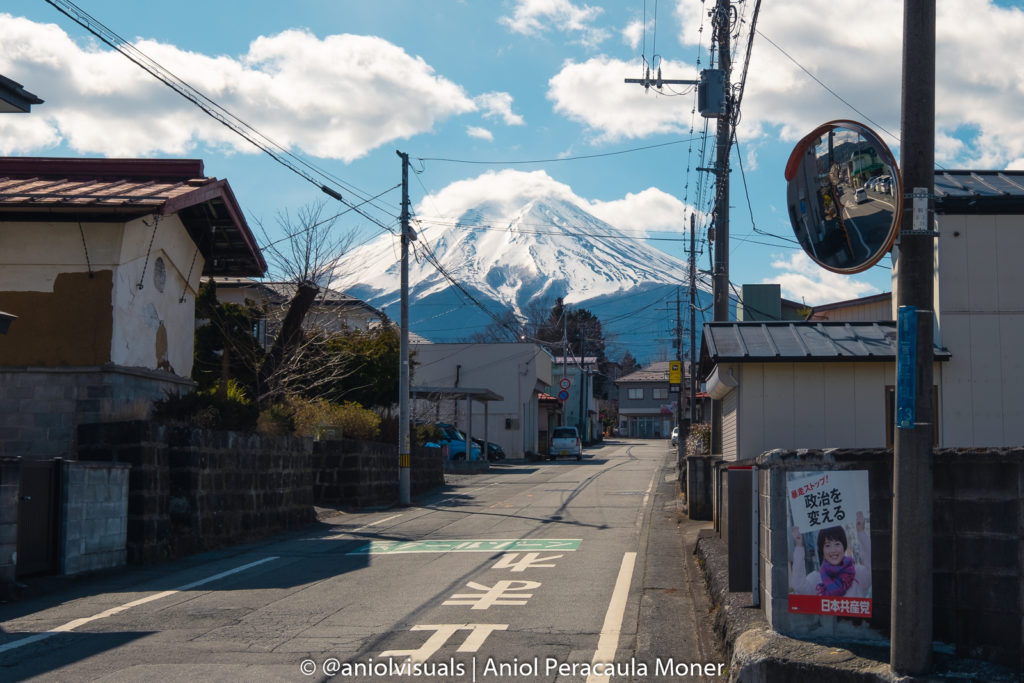
What to see in the Mount Fuji Five Lakes area
Kawaguchiko Lake and its surroundings are home to some of the most iconic views of Mt. Fuji and Japan, but also have some hidden secret places that are worth visiting.
Chureito Pagoda
This is the most iconic landmark in the area and a must in any Mount Fuji Guide. A beautiful viewpoint of Mt. Fuji with a five-store pagoda in the foreground. During the cherry blossom season, the views are outstanding. During autumn, the red and orange colours make the view magical, but it is a place worth visiting regardless of the season. Note that in order to get clear views of Mt. Fuji, some seasons are better than others.
When is the best time to visit Japan?
Find out what makes each season special here!
It is a very popular place among photographers, locals and tourists. If you want to get the best light, sunrise and sunset are the best options. However, it is also when most people visit the areas, especially at sunset.
How to get to the Chueito Pagoda?
To get to the Chureito Pagoda, take the Fujiku Railway line to the Shimoyoshida Station. It is not included in the JR Pass, but it is quite cheap. Once at the station follow the signs, and enjoy the 400 stairs route, up to the mountain. Take breaks to enjoy the views and admire the beauty of this area.
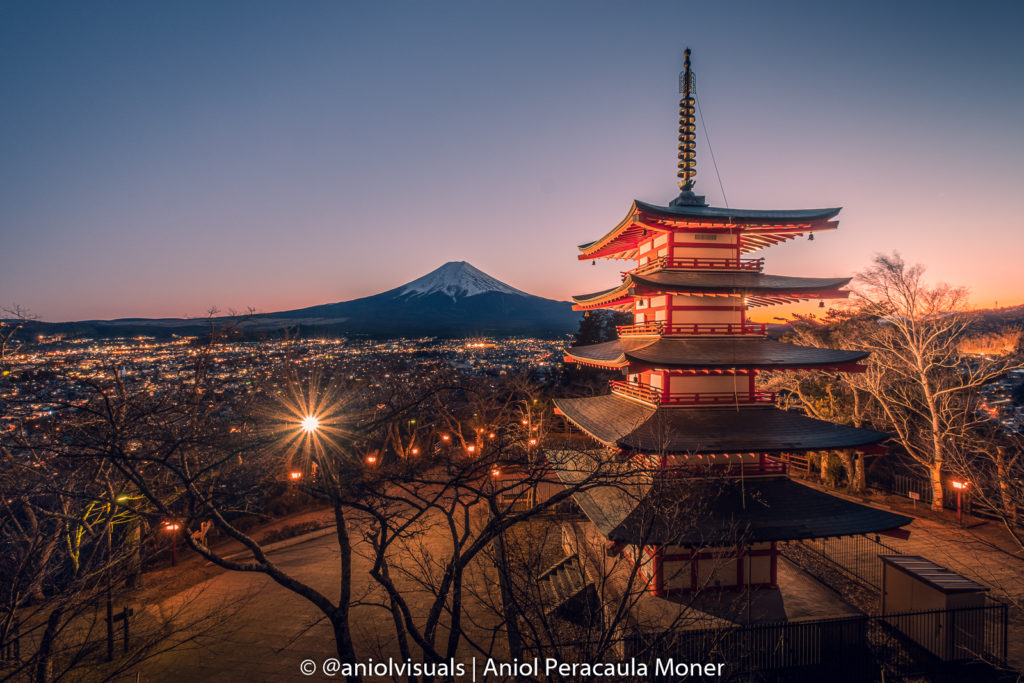
Kitaguchi Hongu Fuji Sengen Shrine
This is one of the two non-popular spots I have listed in this Mount Fuji Guide. Temples are everywhere in Japan, and the Kawaguchiko area is no exception. This is one of the largest temples in the city, and after visiting most of the major temples in cities like Kyoto or Tokyo, I still believe that it is worth visiting. The long corridor, after the initial Torii gate, entering the forest and approaching the shrine makes the place unique.
I would highly recommend getting to the shrine early in the morning. It does not get very crowded, but walking alone in the big avenue leading to the shrine is an amazing and relaxing experience.

How to get to Kitaguchi Hongu Fuji Sengen Shrine?
To get to the Kitaguchi Hongu Fuji Sengen Shrine, take a bus at the Kawaguchiko bus and train station. If you doubt which bus to take, go to the small bus station information stand, and they will point you in the right way. The bus tickets are not paid on the station, instead, you get onto the bus, and pay when you leave. Each bus stop has a number, and the bus has screens indicating how much you have to pay depending on the duration of your traject and your stop. In case of doubt, have your coins ready and the drivers will gladly help you.

Kawaguchiko Lake Shore
This is the reason to visit this area and my favourite spot on Mount Fuji guide. The Kawaguchi Lake and the fact that from its shore you can get one of the best views of Mt. Fuji. Getting to the lake is very easy. From the bus and train station, turn left and follow the main road. From there, just walk for less than 30 minutes and you’ll be by the lake. There are buses, but if one has time, it is beautiful to walk and enjoy the views of Mt. Fuji, it is literally everywhere!
A better option would be renting a bike, either from any of the bike rental shops located in front of the train station or at your accommodation (check beforehand if there is the option). Get your bike and cross the big bridge (Ohashi Bridge), to get to the northern shore of the lake, and enjoy the path that follows the water. Remember that in Japan people drive on the left side, like in the UK, so be careful with other bikers. Depending on your physical shape, you can either cycle the whole lake, or just follow the road until Oishi Park.
If you like photography, this lake is probably the best place to get a good photo of Mount Fuji. Sunrise, sunset, midday… the photos are amazing regardless of the time of the day!
Japan’s best photography spots
50+ photography spots, with tips on how to get the best photo possible here!

Oishi Park
Oishi Park is a free access park located by the Kawaguchi lakeshore. There are four ways to get to the park. Private car, bus, bike or walking. There are buses that go from the Kawaguchiko Train and Bus Station to Oishi park all day (check timetables at the bus station, they change depending on the season). Biking and walking are the most feasible options.
It will take around 1-hour walking or 30 minutes biking, from the Ohashi Bridge.
This is a beautiful area by the lake, especially worth visiting during spring when the flowers and plants are at their best, and it is possible to capture the classical image of Mt. Fuji with beautiful flowers in the foreground. I visited the area in late February, and it was is still worth visiting, as it is free and easily accessible.
It is a pretty famous place between the Japanese locals and tourists, so expect to find lots of people during the spring and summer season. The area is full of cute cafes and restaurants, so it can be a good spot for a break or a quick bite.
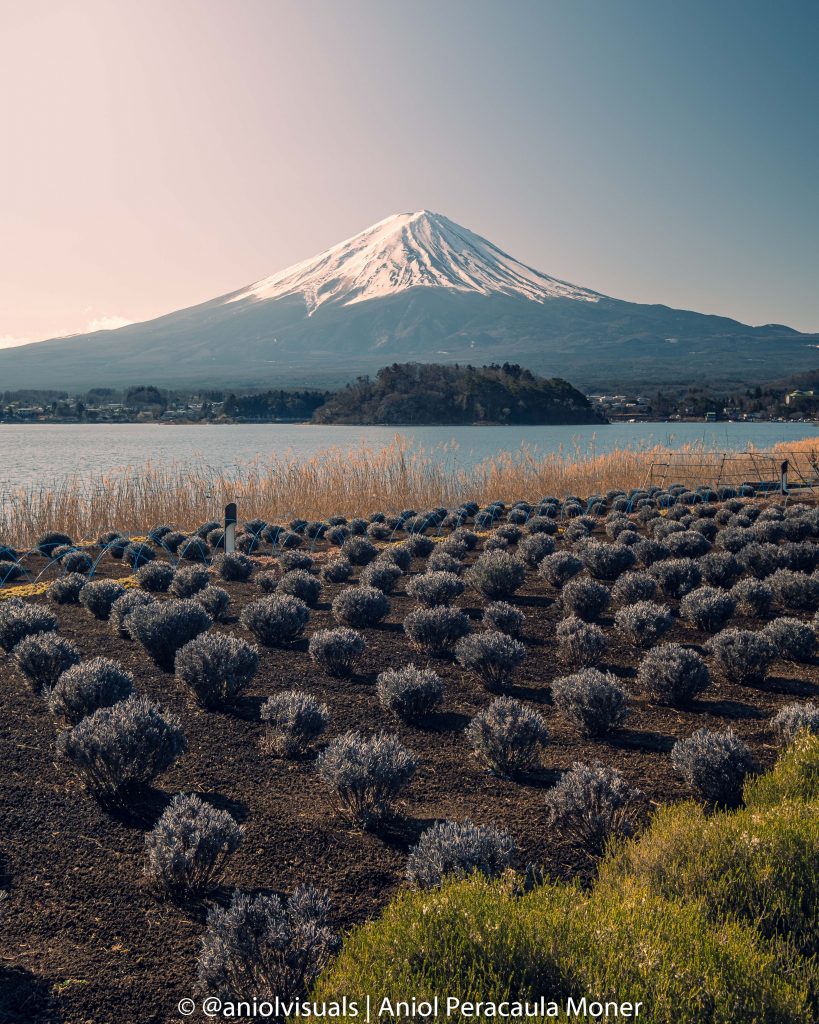
Secret Spot: Arayayama Shrine
Arayayama Shrine is my top-secret spot to visit in the Kawaguchiko area, and the last spot in the Mount Fuji and Kawaguchiko lake guide. Almost impossible to find on the internet, at least for the English-speaking community. Due to the high volume of tourists in Japan, some restaurants and tourist locations are not being posted on Google Maps to avoid hordes of tourists. This spot, however, although not advertised, can be found online.
Getting there requires either a map or a phone with a connection to the internet, and a bit of walking. From the Kitaguchi Hongu Fuji Sengen Shrine, it takes no more than 10-15 minutes walking. Located in the middle of a street, surrounded by houses, this place was all for myself and the few locals that approached to pay their respects to the shrine.
It is a small shrine, but its main attraction is the set of red torii gates, similar to the ones that can be found in Kyoto or in Tokyo. In this case, no tourists, plenty of time, and the magical atmosphere of being a non-touristic spot. Not everyone can enjoy a shrine in silence, and at the Arayayama shrine, it is possible.
Japan secret photography spots
Discover unusual Japan Photo spots with exact locations and tips about how to get there here!
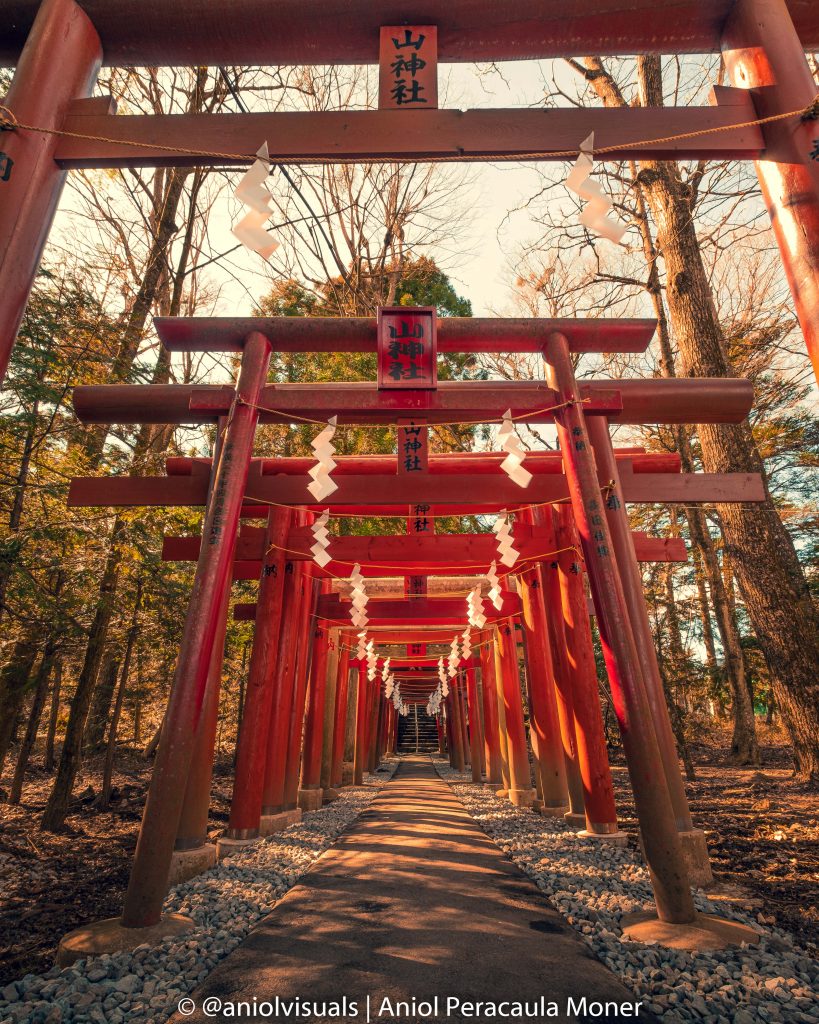
Fuji Five lakes area is worth visiting and with plenty of amazing places to discover. I hope you enjoyed this Kawaguchiko and Mount Fuji guide! To see more of my work in Japan or any other of my trips, visit my Instagram (@aniolvisuals)! If you have any questions contact me via the contact form or at hello@aniolvisuals.com.
For more Japan travel content, visit my dedicated page or get inspired with any of the articles below!
